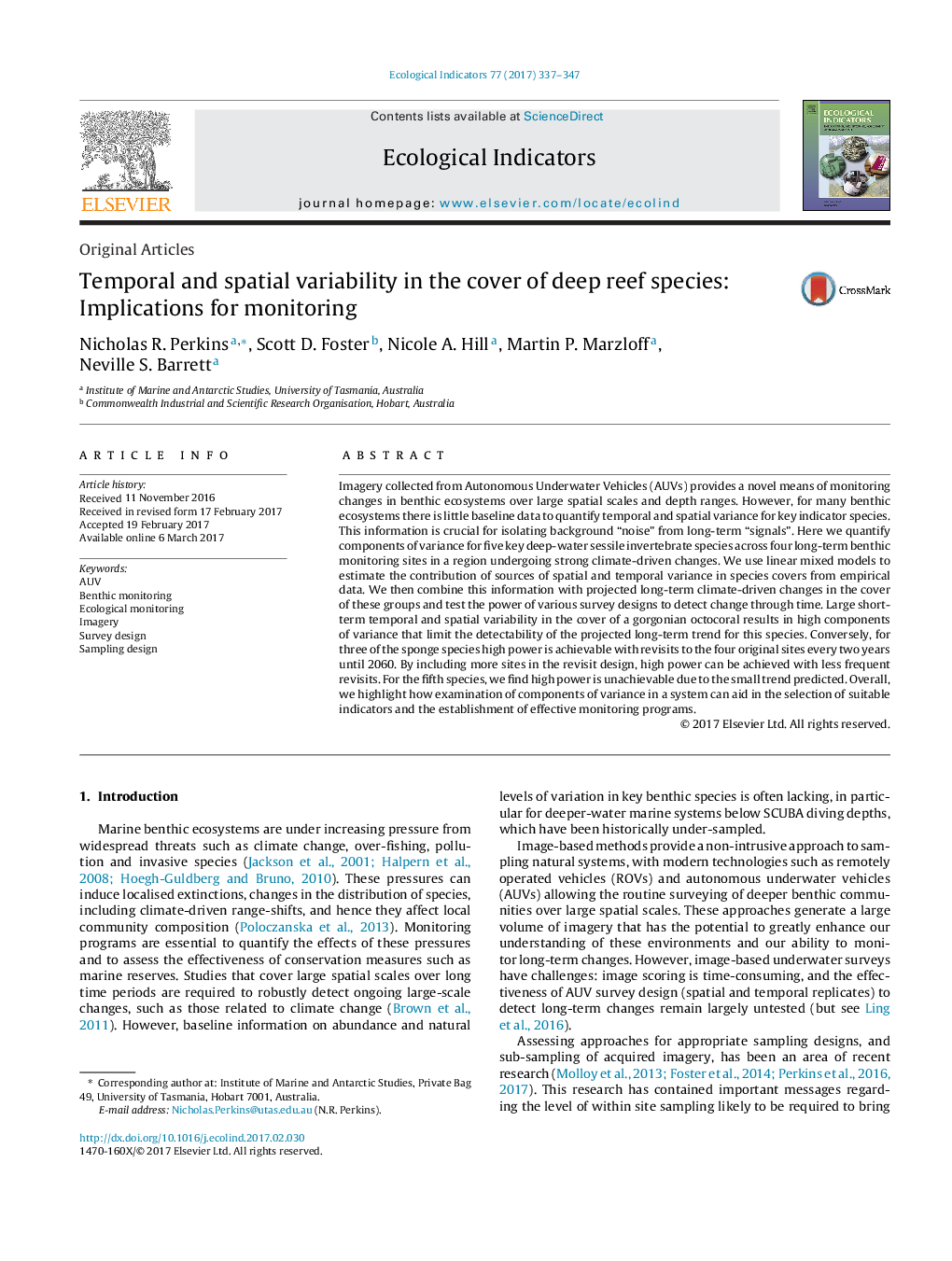| Article ID | Journal | Published Year | Pages | File Type |
|---|---|---|---|---|
| 5741737 | Ecological Indicators | 2017 | 11 Pages |
Imagery collected from Autonomous Underwater Vehicles (AUVs) provides a novel means of monitoring changes in benthic ecosystems over large spatial scales and depth ranges. However, for many benthic ecosystems there is little baseline data to quantify temporal and spatial variance for key indicator species. This information is crucial for isolating background “noise” from long-term “signals”. Here we quantify components of variance for five key deep-water sessile invertebrate species across four long-term benthic monitoring sites in a region undergoing strong climate-driven changes. We use linear mixed models to estimate the contribution of sources of spatial and temporal variance in species covers from empirical data. We then combine this information with projected long-term climate-driven changes in the cover of these groups and test the power of various survey designs to detect change through time. Large short-term temporal and spatial variability in the cover of a gorgonian octocoral results in high components of variance that limit the detectability of the projected long-term trend for this species. Conversely, for three of the sponge species high power is achievable with revisits to the four original sites every two years until 2060. By including more sites in the revisit design, high power can be achieved with less frequent revisits. For the fifth species, we find high power is unachievable due to the small trend predicted. Overall, we highlight how examination of components of variance in a system can aid in the selection of suitable indicators and the establishment of effective monitoring programs.
